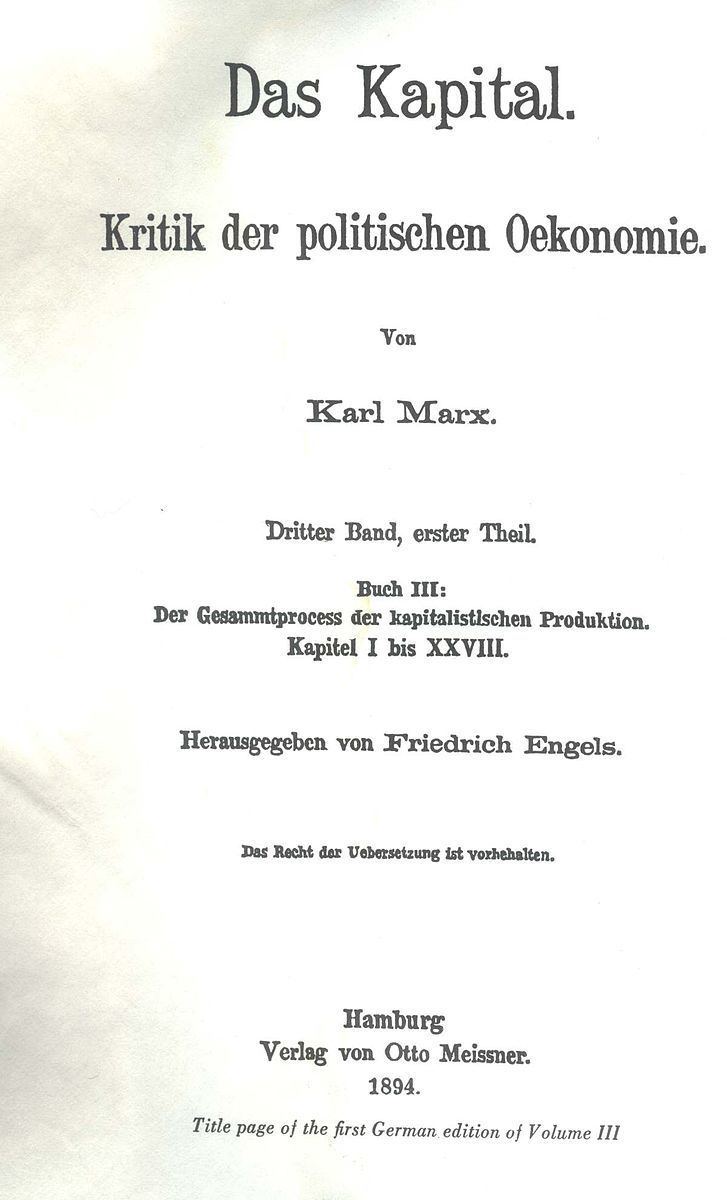Originally published 1894 | ||
 | ||
Similar Karl Marx books, Other books | ||
Capital, Volume III, subtitled The Process of Capitalist Production as a Whole, is the third volume of Capital: Critique of Political Economy. It was prepared by Friedrich Engels from notes left by Karl Marx and published in 1894.
Contents
Volume III is in seven parts:
- The conversion of Surplus Value into Profit and the rate of Surplus Value into the rate of Profit
- Conversion of Profit into Average Profit
- The Law of the Tendency of the Rate of Profit to Fall
- Conversion of Commodity Capital and Money Capital into Commercial Capital and Money-Dealing Capital (Merchant's Capital)
- Division of Profit Into Interest and Profit of Enterprise, Interest Bearing Capital.
- Transformation of Surplus-Profit into Ground Rent.
- Revenues and Their Sources
The work is best known today for part 3, which in summary says that as the organic fixed capital requirements of production rise as a result of advancements in production generally, the rate of profit tends to fall. This result, which orthodox Marxists believe is a principal contradictory characteristic leading to an inevitable collapse of the capitalist order, was held by Marx and Engels to, as a result of various contradictions in the capitalist mode of production, result in crises whose resolution necessitates the emergence of an entirely new mode of production as the culmination of the same historical dialectic that led to the emergence of capitalism from prior forms.
Volume 3 is subtitled "The process of capitalist production as a whole" and is concerned primarily with the internal differentiation of the capitalist class. The first three parts are concerned with the division of surplus value amongst individual capitals, where it takes the form of profit. The following parts are concerned with merchants' capital, interest-bearing capital and landed capital. The last part draws the whole account together. The aim of the volume as a whole is to 'locate and describe the concrete forms which grow out of the movements of capital as a whole...The various forms of capital, as evolved in this book, thus approach step by step the form which they assume on the surface of society, in the action of different capitals on one another in competition, and in the ordinary consciousness of the agents of production themselves." (25) (Clarke).
